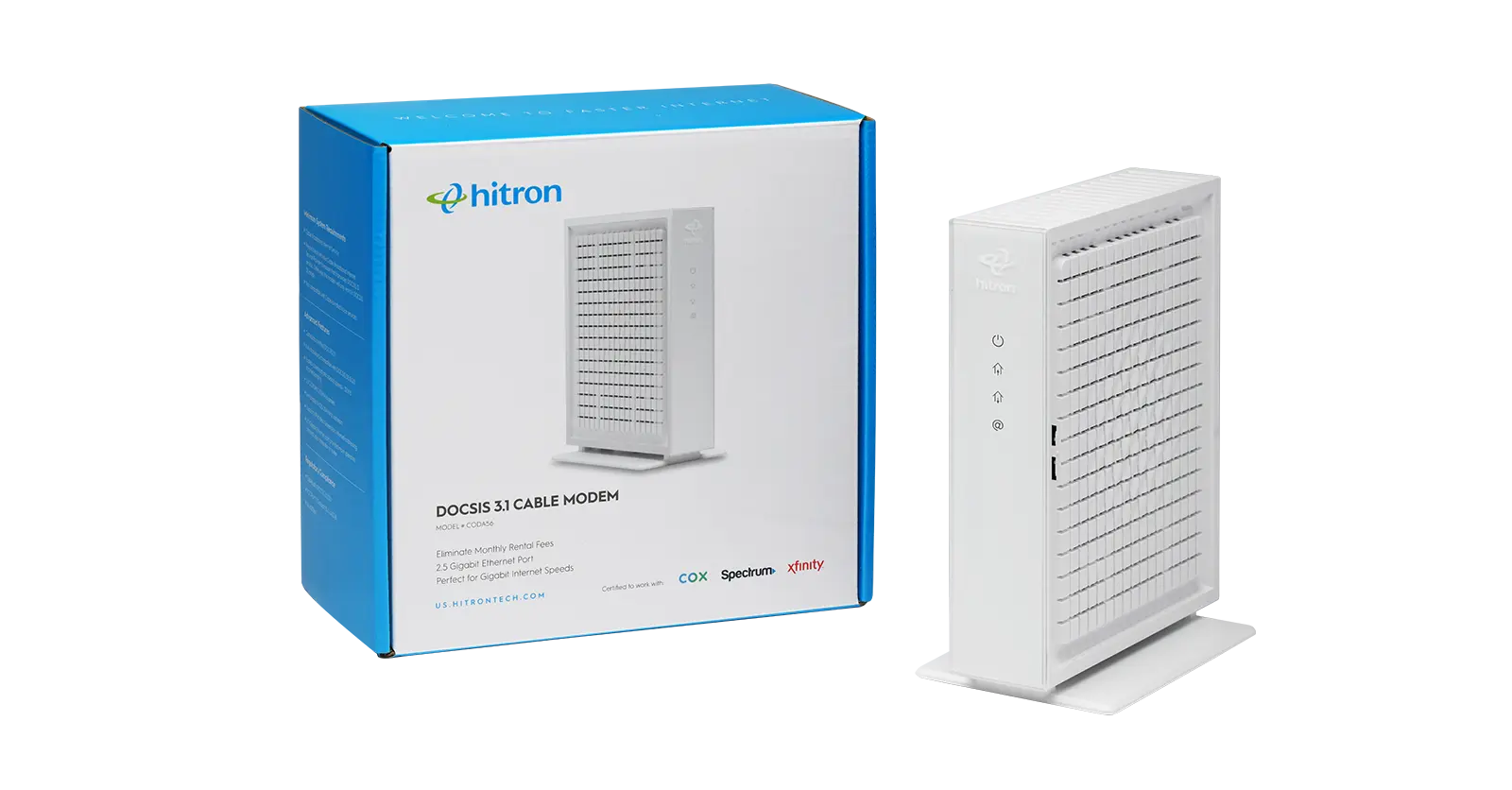What You’ll Learn in This Article
- What a modem is and what it does
- Why a modem is required for Internet access
- How modems differ from routers
- Which type of modem you need based on your Internet provider
- How to choose the best modem for speed, compatibility, and performance
- Expert resources to help you make informed decisions
What Is a Modem?
A modem—short for modulator-demodulator—is the piece of hardware that enables your home to access the Internet. It acts as the translator between your ISP’s network and the devices in your home.
Here’s how it works:
- Your ISP sends a signal through coaxial cable, DSL line, or fiber line.
- The modem receives that signal and converts it into digital data.
- Your devices (like laptops, smart TVs, or gaming consoles) use this data to connect to the Internet.
Learn more: What Is a Cable Modem and How Does It Work?
What Are Modems Used For?
Modems serve as the access point between your home and your Internet provider. Specifically, they:
- Connect to your ISP over coaxial cable, DSL, or fiber
- Translate analog signals into digital information and vice versa
- Enable Internet access for devices in your home
- Handle upstream and downstream data, such as streaming, gaming, or video calls
They are essential equipment for homes with Internet plans that do not include a combined modem/router from the provider.
Do I Also Need a Router?
Yes—if you want WiFi or to connect multiple devices.
- A modem connects your home to the Internet.
- A router takes that Internet connection and distributes it to devices via WiFi or Ethernet cables.
While some providers offer a single device that combines both functions, many people choose standalone modems and routers for improved speed, reliability, and upgrade flexibility.
Read more: The Difference Between a Modem and a Router
Types of Modems
The right type of modem depends on the type of Internet service you have:
Internet Type
Device Type Needed
*Fiber ONTs are provided by your ISP and function similarly to a modem.
For cable Internet users, DOCSIS 3.1 modems offer the best performance and compatibility with today’s high-speed plans.
Learn more: What Is DOCSIS 3.1?
How to Choose the Right Modem
Here’s what to consider when selecting a modem:
- ISP Compatibility – Always choose a model approved by your provider
- DOCSIS 3.1 Support – Future-proof performance for cable connections
- Ethernet Port Speeds – Look for 1 Gbps or 2.5 Gbps ports to match your plan
- Performance Tier – Ensure the modem can handle your download/upload speeds
Need help finding the right one?
- What Modems Work with Xfinity?
- Spectrum Modems: What You Should Know Before Buying or Upgrading
- What’s Required to Be an Approved Xfinity Modem
- What Is Required to Be an Approved Spectrum Modem
FAQs
Can I get Internet without a modem?
Only if your provider supplies a built-in modem/router combo. If not, a modem is required to access the Internet.
Can I use any modem with my ISP?
No. ISPs have approved modem lists. Always check compatibility before purchasing.
What’s the difference between a modem and a router?
A modem connects you to the Internet; a router distributes that connection to your devices. Learn more here.
Do I need a DOCSIS 3.1 modem?
If you have cable Internet and want faster speeds or plan to upgrade, yes. DOCSIS 3.1 supports gigabit speeds and is backward compatible with older systems.
Can I buy my own modem instead of renting one?
Yes—and doing so can save you money long-term. Hitron’s certified modems are approved for use with major ISPs like Xfinity and Spectrum.
Upgrade Your Internet Experience with a Hitron Modem
Still renting a modem that limits your speed—or worse, paying for performance you can’t fully use? Make the switch to a Hitron modem and take control of your connection. The Hitron CODA gives you reliable DOCSIS 3.1 performance with a Gigabit Ethernet port, perfect for streaming, browsing, and everyday use. Need even faster wired speeds? The CODA56 includes a 2.5 Gigabit Ethernet port, unlocking more bandwidth for households with heavy Internet usage, gaming, or work-from-home needs.
Both models are certified for use with major cable Internet providers like Comcast Xfinity and Charter Spectrum and are easy to set up in minutes. Stop overpaying for underperforming equipment—upgrade to a Hitron modem and get the speed you’re already paying for.
